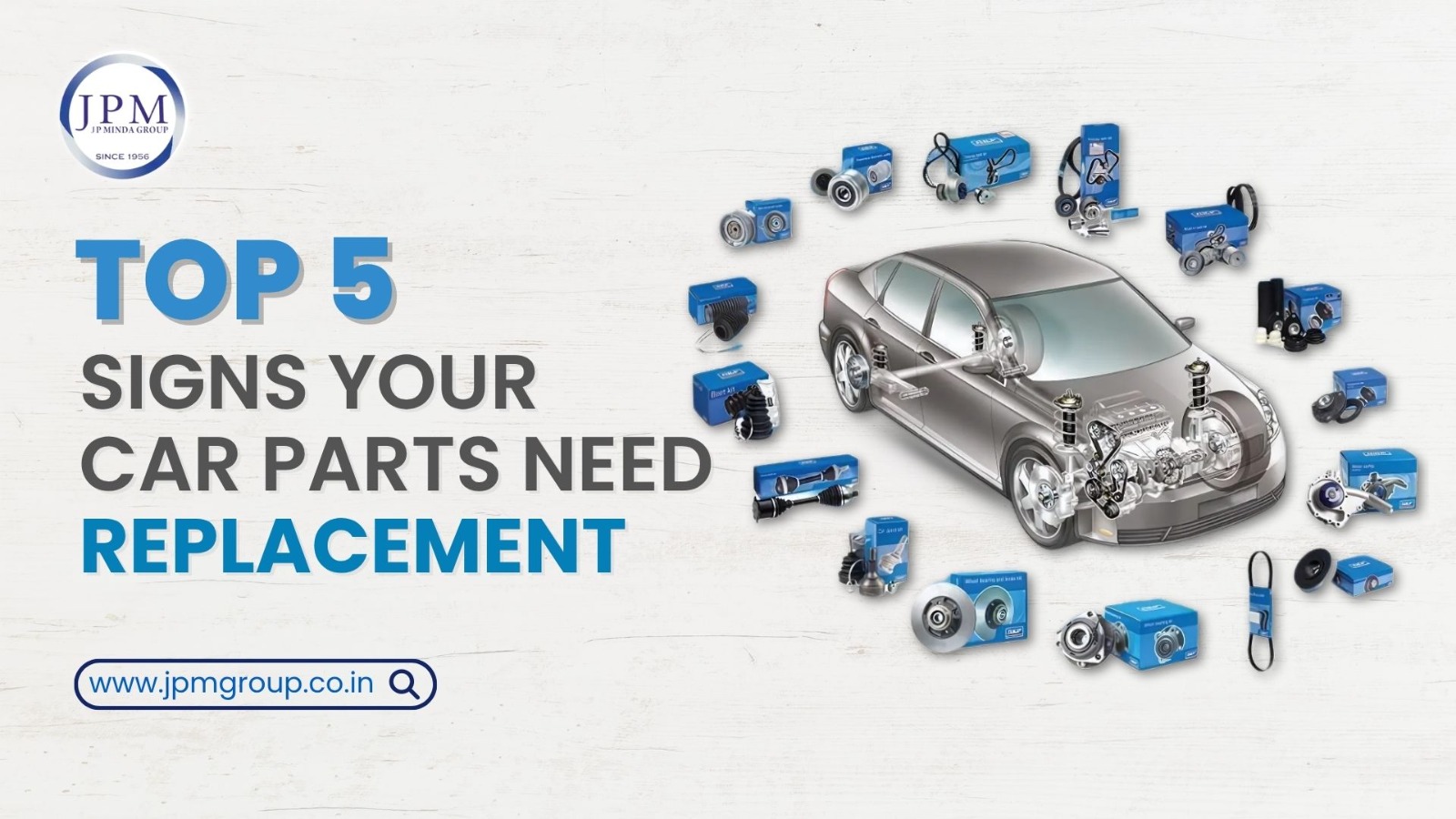In today’s fast-paced world, where vehicles play an essential role in everyday life, the drive toward sustainability goes beyond electric cars and ride-sharing apps, it also includes what’s under the hood. The components that keep your vehicle running are now part of the environmental conversation. As a leader in the automotive parts manufacturing industry, JP Minda is embracing this change because sustainable auto parts are no longer just good for the planet; they are also redefining vehicle performance, enhancing durability, and delivering long-term savings.
Sustainable Auto Parts is driving a quiet revolution in the automotive industry — one bolt, filter, and component at a time. From recycled metals to eco-friendly brake pads, we’re creating a greener path forward, proving that performance and sustainability can go hand in hand.
Here are five powerful ways why JP Minda is getting inspired with the idea of sustainable auto parts that benefit your vehicle and the environment :
1. Lower Carbon Emissions Without Sacrificing Performance
Every vehicle part incurs an environmental cost, from raw material extraction to manufacturing and shipping. Conventional components, especially those made from new metals and polymers, require energy-intensive processes that contribute to increased greenhouse gas emissions.
Sustainable auto parts, on the other hand, are often made using:
- Recycled aluminum, steel, and plastics
- Low-energy manufacturing processes
- Biodegradable or reusable packaging
When installed, these parts not only reduce your car’s environmental impact but also maintain and often improve its efficiency and performance. For example, remanufactured engines can match the performance of new ones while generating up to 80% less CO2 during production.
2. Less Waste in Landfills and a More Circular Economy
The automotive sector generates millions of tons of waste annually, much of which ends up in landfills. Sustainable auto parts are designed with the circular economy in mind, where materials are reused, remanufactured, and recycled instead of discarded.
Here’s how it helps:
- Old brake rotors can be refinished instead of being replaced
- Used batteries are being recycled into new battery components
- Worn tires are repurposed into road materials, flooring, and playgrounds
JP Minda is finding inspiration in sustainable auto parts, taking meaningful steps toward a greener future. By embracing eco-friendly components, we’re helping to reduce landfill waste, protect ecosystems, and conserve natural resources one part at a time.
3. Better Fuel Efficiency Through Smart Design
Did you know that lighter, sustainable auto parts can improve your vehicle’s fuel economy? That’s because weight reduction is one of the most effective ways to increase mileage.
Sustainable auto parts manufacturers now use:
- Carbon fiber composites
- Recycled aluminum alloys
- Plant-based plastics
These materials not only reduce the weight of parts like panels, bumpers, and engine components but also ensure your vehicle requires less fuel to operate, which means lower CO2 emissions and fewer trips to the gas station.
4. Healthier Air and Fewer Toxins Released
Brake pads, tires, and filters wear down over time and release microscopic pollutants into the air. Sustainable auto parts alternatives are engineered to minimize toxic particle release, protecting both human health and the environment.
For instance:
- Copper-free brake padsreduce harmful dust
- Low-VOC (volatile organic compound) materialskeep cabin air cleaner
- Eco-friendly air filtersensure fewer pollutants enter the engine and the atmosphere
This results in better air quality, especially in urban areas where pollution levels are already dangerously high.
5. Longer Lifespan, Lower Maintenance, and Cost Savings
Sustainable doesn’t mean “fragile.” Sustainable auto parts are often more durable because they’re built to last and reduce the frequency of replacements.
Examples include:
- Remanufactured alternatorswith warranties matching new units
- Long-life synthetic oils and filtersthat reduce service intervals
- Green-certified tiresthat last longer and improve traction
In the long run, you save money on repairs, reduce your carbon footprint, and support a more responsible automotive supply chain.
Conclusion;
Sustainable vehicle parts aren’t just a trend; they’re the future of smart, responsible driving. Whether you’re a daily commuter, a fleet owner, or just a weekend road tripper, making the shift towards Sustainable auto parts, automotive industry giants like JP Minda can bring a big impact with small steps.
You don’t need to switch to an electric vehicle overnight to contribute to the planet’s health. Sometimes, it’s as simple as choosing parts that last longer, pollute less, and support a cleaner supply chain.
So keep asking…
Is there a greener alternative?
Because better parts mean a better planet and a better ride.
FAQ
- What is sustainability in the automotive industry?
Using eco-friendly materials, reducing emissions, conserving resources, and minimizing environmental impact in vehicle production and operation. - What are the sustainable materials used in the automobile industry?
Recycled metals, bioplastics, natural fibers, organic fabrics, and eco-friendly coatings. - What is sustainability in the automotive industry?
Making vehicles and parts that are better for the environment and future generations.

